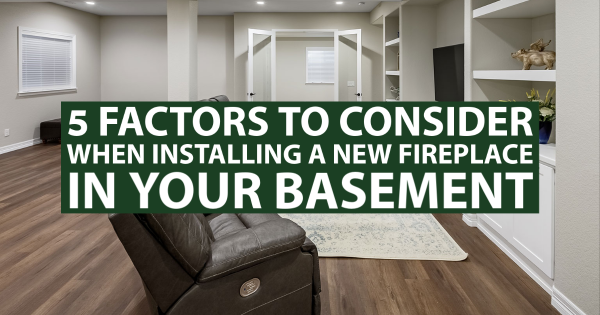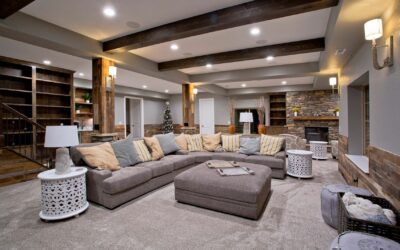A new fireplace in the basement is a great way to renovate and make your home cozy. However, the nature of the basement and its location often poses several challenges. Here are some of the factors to consider before adding a new fireplace.
1. Safety Concerns
Before you begin your basement remodeling project, you need to take building codes into account. Since basements often don’t have windows and are on a lower elevation, there is a higher risk of fire hazards and carbon monoxide poisoning. Depending on the system you choose, you’ll need an efficient ventilation system when installing a new fireplace. You don’t necessarily need a chimney. You can hire a basement renovation company to deploy a direct vent system to facilitate airflow and prevent hazards.
2. Heating Needs
Another factor to consider during renovations is your heating needs. Before installing a new fireplace, a professional should conduct an energy audit of your basement. Your new fireplace should match the requirements of the room. If its output is too high, it will overheat the basement. If it is too low, it will overwork to keep the space warm. Mismatching the capacity can wear down your system faster and increase your energy consumption.
3. Type of Fireplace
The type of fireplace you choose will also depend on factors such as aesthetics, your budget, and maintenance. Wood-burning masonry options provide the traditional ambiance that many homeowners seek in a fireplace. However, they require efficient ventilation. You will have to organize to clean the chimney, too. Prefabricated fireplaces are easier to install and maintain than their masonry counterparts. You can choose between gas and electric system.
4. Installation and Backdrafts
Substandard installations of fireplaces often create issues such as back drafting. The pressure at the lower elevation of your chimney may draw air from the surroundings. The ventilation outlet needs to be higher than the neutral pressure plane of the house. A backdraft can result from blockages or creosote buildup, which can be fixed by cleaning the chimney. External factors such as trees around the building may also interfere with airflow in the interior.
5. Maintenance
A new fireplace will require routine maintenance to keep it energy-efficient. The type of system you choose will determine the convenience and ease of maintenance. Gas and electric fireplaces are cleaner and more convenient to operate. Wood-burning options may have that cozy ambiance, but they demand a lot of work to keep them efficient and safe.
A new fireplace can be a cozy addition to your basement, but you need to be careful to avoid accidents and regrets. The type of fireplace you opt for and the quality of installation are some of the most critical factors to consider. For the best results, consult a basement finishing company in Denver.




Recent Comments